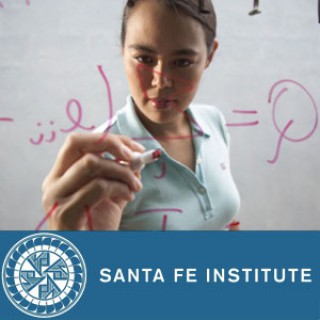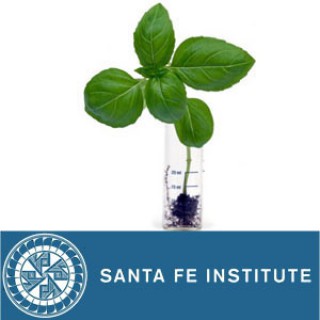
Colloquia - Video
Follow Colloquia - VideoConnecting to Apple Music.
- Mar 24, 2011 LATEST EPISODE
- infrequent NEW EPISODES
- 1h 10m AVG DURATION
- 5 EPISODES
More podcasts from Santa Fe Institute
Latest episodes from Colloquia - Video

We show why the amount of information communicated between the past and future — the excess entropy — is not in general the amount of information stored in the present — the statistical complexity. This is a puzzle, and a long-standing one, since the former describes observed behavior, while optimal prediction requires the latter. We present a closed-form expression for the excess entropy in terms of optimal causal predictors and retrodictors — both epsilon-machines of computational mechanics. This leads us to two new system invariants: causal irreversibility — the temporal asymmetry between causal representations — and crypticity — the degree to which a process hides its state information.

This talk presents a simple statistical mechanical model of how energy/money distributes itself through a set of coupled systems that allow negative energy or debt.

The talk will present the challenges and accomplishments of the Biosphere 2 facility, the world’s largest biospherics laboratory, during the years of its closed ecological system experiments (1991-1994). The talks will review the conceptual design of the facility, including developing bioregenerative techniques for purifying air, water and wastewater and recycling nutrients and a highly productive, non-chemical sustainable agricultural system. The relevance of Biosphere 2 research for improving human management and mitigating negative impacts on our global biosphere will be explored as well as lessons for ecological restoration of critical biomes. Some of the striking atmospheric and system dynamics will be shared illustrating the opportunities the extensive sensor and floral/faunal evolution data from Biosphere 2 offer to advance modeling of whole system metabolism and complex/non-linear systems. This can deepen our understanding of Biosphere 2’s historic dynamics and also improve future closed systems designs. The unique experience of the “biospherians” living and working as part of a biospheric system will also be discussed.

Online tools such as email, preprint servers and Skype have changed the way scientists work. In this talk I argue that such networked tools are in their infancy, and there is enormous untapped potential for online tools to change the way scientific discoveries are made. I'll discuss very recent examples that show the way, including large-scale open source collaborations in mathematics, and citizen science projects enabling amateurs to make discoveries. This potential is only part of the story, however, for there are cultural barriers strongly inhibiting scientists from using online tools to their full potential. I'll describe these cultural barriers, and how they can be overcome.

The mutualistic interactions between plants and the animals that pollinate them or disperse their seeds can form complex networks involving hundreds of species. These coevolutionary networks are highly heterogeneous, nested, and built upon weak and asymmetric links among species. Such general architectural patterns increase network robustness to random extinctions and maximize the number of coexisting species. Therefore, mutualistic networks can be viewed as the architecture of biodiversity. However, because pylogenetically similar species tend to play similar roles in the network, extinction events trigger non-random coextinction cascades. This implies that taxonomic diversity is lost faster than expected if there was no relationship between phylogeny and network structure.

















